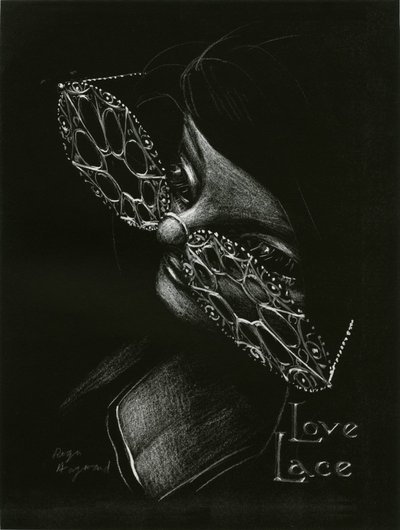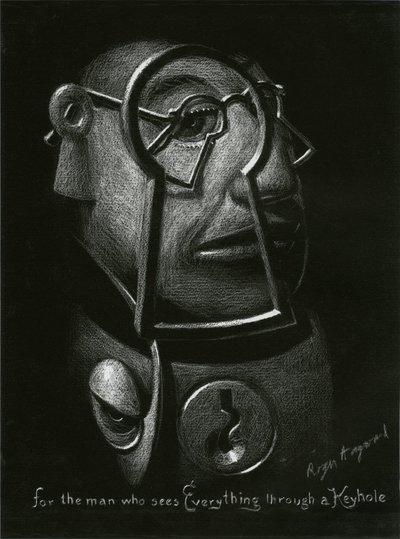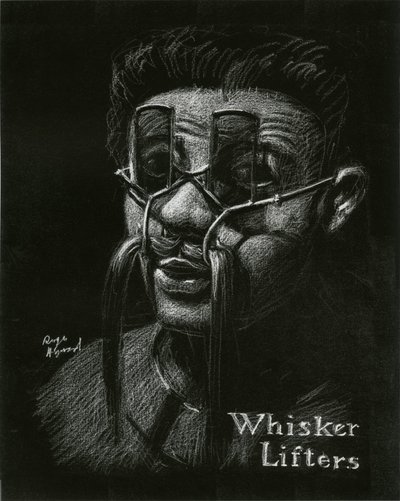Roger continued to submit materials to the Worm Runner’s Digest for a good portion of the decade and, likewise, continued to mail his drawings to friends and associates, along with his usual correspondence. Among Roger’s various new creations were “Livets,” “Lovets” and “Flyleaves from a Snatchuralist’s Gnote-book.” The Worm Runner’s Digest staff decided to form an anthology for the magazine’s ten year anniversary early in the decade, and Roger’s “Blivets” was chosen for inclusion in the text, which was published by Harcourt in 1973. Roger also became interested in the history of clothing and suggested to C. L. Stong and others that Scientific American publish a piece on the history of the cod piece. While the staff could not oblige for obvious reasons, Roger eventually wrote a comical and compelling treatise on the subject. He continued to draw, and developed a lot of content, but most of his sketchbooks from this era were filled with optical illusions, caricature portraits or drawings like those he had published in the Worm Runner’s Digest.
Roger remained interested in the work of others and sent out copies of his past research, including his paper on magnetic loops, whenever he got a chance. Roger and Betty also attempted to publish a book titled Face Furniture, which consisted of several illustrations of bizarre eyeglasses accompanied by poems and rhymes written by the couple. John Strong attempted in earnest to find a publisher and nearly succeeded, but was ultimately unsuccessful. (The book itself was finally published in 2008 by Tasora Books with help from Hayward family relatives.) A new problem that Roger encountered in the 1970s was that of maintaining recognition for his previous work. On a number of occasions, Roger wrote to various magazines and academic articles after he was not properly cited for development of various processes or inventions, including a mistake by Applied Optics concerning the two-mirror Schmidt optical system.
As his eyesight continued to fail, Roger began to further abandon his remaining recreational activities. He stopped illustrating after a time, and began constructing masks like the ones he had made in the 1920s. He admitted that his longstanding interest in astronomy had largely faded with his eyesight. First Roger and then Betty stopped driving, eventually donating their Chrysler to Caltech. Betty had always edited Roger’s writing, and after switching to a much larger typing font so he could better read the keys of a typewriter, Betty began to type letters for Roger as he dictated them.
While the worsening of his eyesight was a hardship in many ways, Roger still managed to find ways to play with his condition in a pseudo-scientific manner. He began to map the problems with his vision, attempting to construct a theory of optics which posited that the eye itself, and not just the brain, was involved with learning, memory and comprehension of images. The theories were largely related to optics, and the ironic tragedy became more apparent in that sight was such an important part of Roger’s life and was the first of his senses to diminish with age. Roger seems to have kept things in a positive perspective and took frequent occasion to laugh off his difficulties.
“One major reason is my failing eyesight, which has stopped my trying to drive a car, thus rendering the world somewhat safer for all concerned.”

Pastel drawing by Roger Hayward of a woman wearing "Love Lace" glasses as published in Face Furniture, by Roger and Elizabeth Hayward, 2008.


